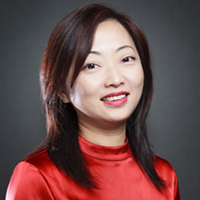 On May 18, the ECS San Francisco Section presented Distinguished Seminar speaker Dr. Shirley Meng via Zoom to present her talk “Li Metal Anode – Advanced Characterization for Next Generation Energy Storage Materials.” The Zoom presentation was a great success, quickly reaching its maximum capacity of 300, and leaving those many participants unable to attend asking how they could later access the content. That content is now here and available on ECSarXiv! Log in to view Shirley Meng’s complete PowerPoint presentation here.
On May 18, the ECS San Francisco Section presented Distinguished Seminar speaker Dr. Shirley Meng via Zoom to present her talk “Li Metal Anode – Advanced Characterization for Next Generation Energy Storage Materials.” The Zoom presentation was a great success, quickly reaching its maximum capacity of 300, and leaving those many participants unable to attend asking how they could later access the content. That content is now here and available on ECSarXiv! Log in to view Shirley Meng’s complete PowerPoint presentation here.
About
Shirley Meng received her PhD in Advance Materials for Micro & Nano Systems from the Singapore-MIT Alliance for Research and Technology in 2005. She subsequently worked as a postdoc research fellow, then as research scientist, at the Massachusetts Institute of Technology (MIT). Meng currently holds the Zable Chair Professor in Energy Technologies at the University of California San Diego (UCSD) where she is also professor in materials science and nanoengineering. The principal investigator of the research group Laboratory for Energy Storage and Conversion (LESC), she is the founding director of the Sustainable Power and Energy Center (SPEC).
Dr. Meng received prestigious awards including the International Battery Association Battery Research Award (2019), American Chemical Society ACS Applied Materials & Interfaces Young Investigator Award (2018), IUMRS-Singapore Young Scientist Research Award (2017), ECS Charles W. Tobias Young Investigator Award (2016), and NSF CAREER Award (2011). Meng is a Fellow of The Electrochemical Society and author/coauthor of more than 190 peer reviewed journal articles, two book chapters, and four issued patents.
Abstract
Lithium (Li) metal has been considered an ideal anode for high-energy rechargeable Li batteries (RLB), while Li nucleation and growth at the nanoscale remains mysterious as to achieving reversible stripping and deposition. Several decades of research have been dedicated to this topic. We have seen breakthroughs in novel electrolytes in the last few years, where the efficiency of lithium deposition exceeds 99 percent. Here, cryogenic-transmission electron microscopy (Cryo-TEM) was used to reveal the evolving nanostructure of Li deposits at various transient states in the nucleation and growth process, in which a disorder-order phase transition was observed as a function of current density and deposition time. More importantly, the complementary techniques such as titration gas chromatography (TGC) reveals the important insights about the phase fraction of solid electrolyte interphases (SEI) and electrochemical deposited Li (EDLi). Last but not least, a few practical aspects of implementing lithium metal anode will be discussed.


